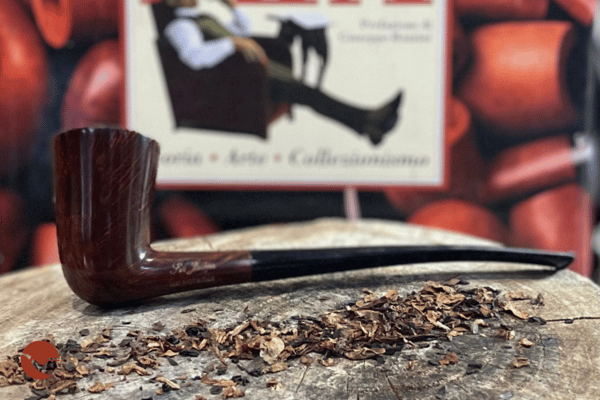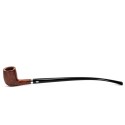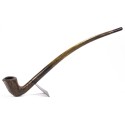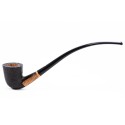Churchwarden Pipes
CLICK HERE FOR AVAILABLE CURVED CHURCHWARDEN PIPES
Churchwarden pipes stand out in the world of slow smoking due to their long mouthpiece, a feature that makes them unique compared to any other shape.
Beyond their unmistakable design, these tobacco pipes boast a fascinating history that has made them a true icon among enthusiasts.
In this article, we will explore their origins, distinctive characteristics, and why every pipe smoker should know about them.
Churchwarden Pipes: Characteristics
The defining feature of Churchwarden pipes is their elongated mouthpiece, which sets them apart from other tobacco pipes that are typically classified based on bowl shape.
In Germany, these pipes are known as "Lesepfeife", or "reading tobacco pipes", as their long mouthpiece keeps the smoke away from the face, making them ideal for smoking while reading.
Churchwarden pipes generally range in length from 23 to 46 cm, with the mouthpiece available in both straight and curved versions.
However, for a tobacco pipe to be classified as a Churchwarden, it must maintain the correct proportions.
For example, a tobacco pipe with a large bowl and a long mouthpiece may resemble a Churchwarden, but it does not belong to this category unless it maintains the characteristic balance of the shape.
Churchwarden pipes always feature medium or small-sized bowls, and those produced by Dunhill are almost always classified within Group 3.
From a smoking perspective, the long mouthpiece allows the smoke to cool down as it travels, providing a smoother and cooler experience compared to other tobacco pipes.

Churchwarden pipe of Ser Jacopo
History of Churchwarden Pipes
The origins of Churchwarden pipes remain somewhat mysterious, with multiple theories attempting to explain their name.
One theory suggests that the name derives from church night watchmen, in an era when churches remained open at all times.
The long mouthpiece allowed them to smoke without the smoke obstructing their vision, ensuring effective surveillance.
Another theory proposes that watchmen used the extended mouthpiece to smoke while leaning out of church windows, preventing smoke from accumulating inside the building.
To truly understand the origins of this fascinating shape, we need to go back a few centuries.
Churchwarden pipes were widely used between the late 18th and early 19th centuries, a time when they became extremely popular.
At the time, tobacco pipes were made from various materials, including brass and lead, but clay remained the most common choice until the second half of the 19th century.
In those years, taverns frequently offered these tobacco pipes to patrons, often as house tobacco pipes, becoming an integral part of the social smoking experience.
CLICK HERE FOR AVAILABLE STRAIGHT CHURCHWARDEN PIPES









By Guido Formisano 02/20/2024 18:30:52
io sono molto soddisfatto di questa Tabaccheria!!